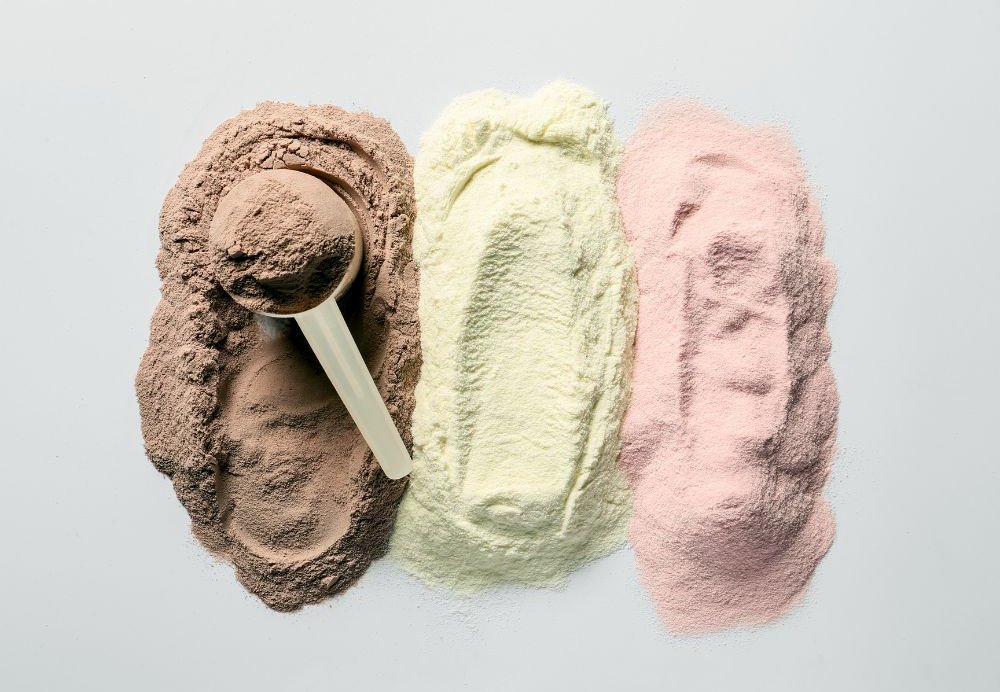When it comes to optimizing your protein intake, many fitness enthusiasts and health-conscious individuals often wonder: can you mix different protein powders for better results? This practice has become quite common, but is it safe? Let’s explore the topic in detail.
Understanding Protein Powders
Protein powders come in various forms, including whey, casein, soy, pea, rice, and hemp. Each type has its unique amino acid profile, digestion rate, and nutritional benefits. Mixing different protein powders can offer a broader spectrum of nutrients and amino acids, which can be beneficial for muscle recovery and growth.
Potential Benefits of Mixing Protein Powders
- Diverse Amino Acid Profile: Combining different protein sources can help you obtain a complete range of essential amino acids. For example, plant-based proteins may lack certain amino acids, while animal-based proteins usually provide them.
- Variety in Nutritional Benefits: Different protein powders contain various vitamins, minerals, and other beneficial compounds. Mixing them can enhance your overall nutrient intake.
- Taste and Texture: Mixing protein powders can improve flavor and texture. For instance, blending a whey protein with a plant-based protein can create a smoother shake and a more enjoyable taste.
- Customization for Goals: If you’re looking for specific benefits—like increased protein intake, lower carbs, or enhanced digestion—mixing powders can help tailor your supplementation to meet those goals.
Complementary Protein Powders
Some protein powders work particularly well together, enhancing both their nutritional value and effectiveness. Here are some popular combinations:
- Whey and Casein: Mixing whey protein (fast-digesting) with casein protein (slow-digesting) can provide a sustained release of amino acids. This combination is ideal for muscle recovery post-workout and helps keep you satiated for longer periods.
- Pea and Rice Protein: This plant-based duo is excellent for creating a complete protein profile. Pea protein is rich in branched-chain amino acids (BCAAs), while rice protein provides the missing amino acids, making them complementary.
- Hemp and Soy Protein: Combining hemp protein, which is rich in healthy fats and fiber, with soy protein, which offers a complete amino acid profile, can create a well-rounded plant-based protein source.
- Egg White and Whey Protein: Mixing these two can enhance muscle-building potential. Egg white protein is rich in essential amino acids, while whey protein offers quick digestion, making this combination effective for post-workout recovery.
- Collagen and Other Proteins: While collagen doesn’t provide all essential amino acids, it can be combined with other protein sources to support joint health, skin elasticity, and overall recovery.
Considerations When Mixing
- Digestive Tolerance: Some individuals may experience digestive issues when consuming multiple types of protein simultaneously. If you have a sensitive stomach, start with tiny doses and see how your body responds.
- Nutritional Balance: Ensure that the combined proteins fit within your overall dietary needs. Mixing high-calorie or high-carb protein powders could lead to an unbalanced macronutrient intake.
- Quality of Protein: Always opt for high-quality protein powders. Mixing lower-quality products can dilute the nutritional value of your shake.
- Allergens: Take note of any food allergies or intolerances. For example, mixing whey and soy protein may not be suitable for someone with a soy allergy.
When to Avoid Mixing
- If You’re Under a Specific Diet Plan: If you’re following a structured diet for weight loss, muscle gain, or any other health condition, it’s wise to stick to the recommended protein source to maintain consistency.
- Medical Conditions: Individuals with specific medical conditions or dietary restrictions should consult a healthcare professional before mixing protein powders.
Best Practices for Mixing
- Start Slow: If you’re new to mixing, begin with small amounts and gradually increase to assess tolerance.
- Experiment with Ratios: Try different combinations and ratios to find the mix that tastes best and works well for your body.
- Keep it Simple: While mixing is beneficial, avoid using too many different types at once. Stick to two or three protein sources for simplicity.
Can You Mix Different Protein Powders? Quick Reference Guide
| Protein Combination | Why Mix Them? | Considerations |
|---|---|---|
| Whey + Casein | Fast + slow digestion for sustained amino acid release | May not suit those with dairy sensitivity |
| Pea + Rice | Complete plant-based amino acid profile | Watch for added carbs or fillers |
| Hemp + Soy | Balanced plant protein with fiber and healthy fats | Soy may be an allergen for some |
| Egg White + Whey | High in essential amino acids, ideal for muscle recovery | Both digest quickly—may need to pair with carbs |
| Collagen + Any Complete Protein | Supports joints, skin, and recovery with full protein support | Collagen is incomplete on its own |
Conclusion
So, can you mix different protein powders? The answer is yes—doing so isn’t inherently bad and can be a strategic way to enhance your nutritional intake and support your fitness goals. By understanding which protein powders complement each other, you can maximize their benefits. As long as you consider your digestive tolerance, dietary needs, and the quality of each protein source, combining them can be a smart addition to your supplement regimen. Always listen to your body, and consult a healthcare or nutrition professional if you have any concerns.
Frequently Asked Questions (FAQ)
Yes, it is generally safe to mix different protein powders, as long as you choose high-quality products and are mindful of your digestive tolerance. Mixing protein powders can offer a broader range of amino acids and nutrients.
Mixing different protein powders can enhance the variety of amino acids, improve nutritional benefits, and offer a better taste and texture. It also allows you to customize your protein intake to suit your specific fitness goals.
Yes, combining proteins like whey (fast-digesting) with casein (slow-digesting) can support muscle recovery and growth by providing a sustained release of amino acids, which can be beneficial post-workout or throughout the day.
It can be a good idea! Mixing plant-based proteins, like pea or rice, with animal-based proteins, such as whey or egg white, can create a more complete amino acid profile, supporting muscle recovery and overall nutrition.
The main concern is digestive tolerance. Some people may experience bloating or discomfort when consuming multiple protein sources. Additionally, mixing too many protein powders may lead to an imbalance in macronutrients, so it’s important to keep your mix simple and aligned with your dietary needs.

